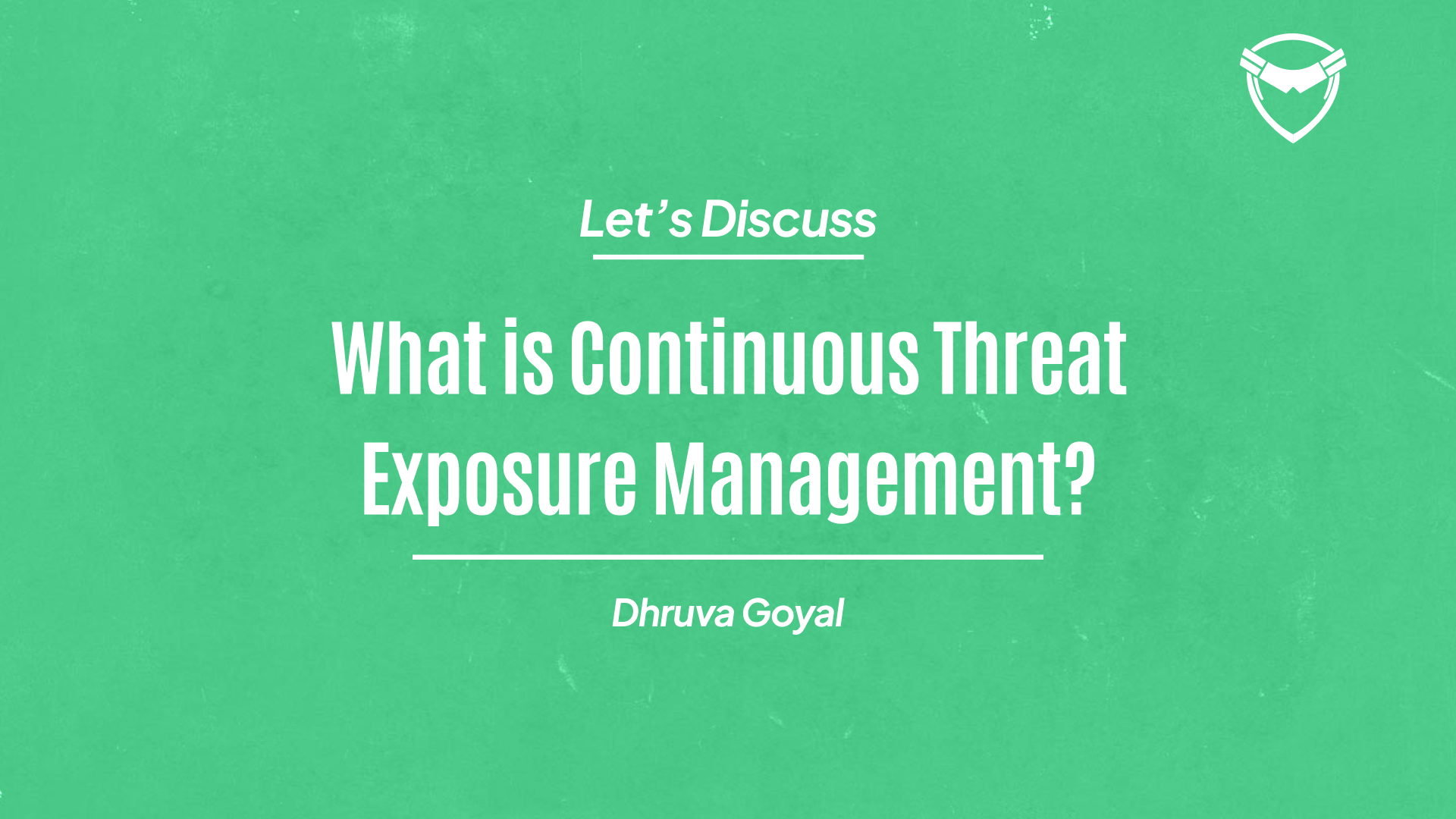In the ever-evolving landscape of cybersecurity, staying ahead of threats is not just a necessity—it's a survival skill. As hackers and security professionals, we are at the forefront of this digital battlefield, constantly adapting to new vulnerabilities and attack vectors. One concept that has gained significant traction in our community is Continuous Threat Exposure Management (CTEM). But what exactly is CTEM, and how can it enhance our defensive strategies?

Continuous Threat Exposure Management is a proactive approach that focuses on the continuous identification, assessment, and mitigation of security threats and vulnerabilities within an organization's IT environment. Unlike traditional periodic assessments, CTEM emphasizes real-time monitoring and rapid response, ensuring that security measures evolve alongside emerging threats.
To effectively implement CTEM, it's crucial to understand its structured approach. A comprehensive CTEM program typically involves five critical stages:
Definition: Scoping sets the foundation by defining the boundaries and objectives of your CTEM program. This involves identifying critical assets, systems, and data that require protection.
Key Actions:
Importance: Proper scoping ensures that CTEM efforts are focused on the most critical areas, optimizing resource allocation and reducing blind spots in your security posture.
Definition: The discovery phase involves uncovering vulnerabilities and potential threats within the scoped environment.
Key Actions:
Importance: Discovery provides the necessary data to understand your current security state, forming the basis for effective threat management.
Definition: Not all vulnerabilities pose the same level of risk. Prioritization ranks vulnerabilities based on their potential impact and the likelihood of exploitation.
Key Actions:
Importance: Prioritization ensures that security efforts are directed where they matter most, maximizing efficiency and effectiveness.
Definition: Validation confirms whether identified vulnerabilities can be exploited and whether remediation efforts are effective.
Key Actions:
Importance: Validation prevents a false sense of security by confirming the real-world impact of vulnerabilities and the success of remediation measures.
Definition: Mobilization involves taking actionable steps to remediate vulnerabilities and enhance security measures.
Key Actions:
Importance: Mobilization translates insights into actions, closing security gaps and strengthening your overall security posture.
Gartner, a leading research and advisory company in the IT sector, has significantly contributed to shaping the concept of Continuous Threat Exposure Management. Recognizing the limitations of traditional, periodic security assessments, Gartner introduced CTEM as a strategic framework to address modern cybersecurity challenges.
According to Gartner, Continuous Threat Exposure Management is a set of processes and capabilities that enable organizations to continually and consistently evaluate the accessibility, exposure, and exploitability of their digital and physical assets. The goal is to prioritize remediation efforts based on risk and business impact, ensuring a focused approach to threat management.
Gartner acknowledges the value of advanced security tools in effectively implementing CTEM. Solutions like Pentest Copilot Enterprise align with Gartner's vision by offering features such as automated vulnerability detection, threat analysis, and seamless integration with existing workflows.
By adopting such tools, organizations can operationalize Gartner's CTEM framework, enhancing their ability to manage threats continuously and proactively.
Building on the five stages, CTEM incorporates several core components that work in tandem to protect your organization:
In the realm of CTEM, having the right tools can make a significant difference. Pentest Copilot Enterprise emerges as a powerful solution that aligns perfectly with the principles of CTEM.
While vulnerability detection is an essential part of a security strategy, adversarial simulation truly tests the robustness of an organization’s defenses by replicating the techniques used by advanced threat actors. Pentest Copilot Enterprise leverages adversarial simulation to provide an in-depth analysis of how a real-world attacker might navigate, exploit, and escalate privileges within a system. This approach gives security teams a proactive edge in understanding and mitigating potential threats.
Key Technical Features of Adversarial Simulation in Pentest Copilot Enterprise:
By incorporating Pentest Copilot Enterprise into your security arsenal, you enhance your ability to manage threats continuously, ensuring a robust defense mechanism that adapts to the ever-changing cyber threat landscape.
Answer: CTEM is a proactive cybersecurity approach that involves the continuous identification, assessment, and mitigation of security threats and vulnerabilities within an organization's IT environment. It focuses on real-time monitoring and rapid response to ensure security measures evolve alongside emerging threats.
Answer: With the increasing sophistication of cyber threats and the complexity of IT environments, traditional periodic assessments are no longer sufficient. CTEM provides a dynamic and proactive approach, allowing organizations to stay ahead of attackers by continuously adapting their defenses.
Answer: Gartner views CTEM as a strategic framework essential for modern cybersecurity. They recommend adopting a proactive security posture, implementing a holistic approach that includes all IT assets, prioritizing threats based on risk, and aligning CTEM processes with business objectives. Gartner also emphasizes the importance of advanced tools and continuous improvement in CTEM implementation.
Answer: The five stages are:
These stages provide a structured approach to managing threats, ensuring that efforts are focused, efficient, and effective.
Answer: Pentest Copilot Enterprise enhances CTEM by offering:
By integrating this tool, organizations can operationalize CTEM principles, improving their ability to manage threats continuously.
Continuous Threat Exposure Management is more than a buzzword—it's a fundamental shift in how we approach cybersecurity. By understanding and implementing the five stages of CTEM—Scoping, Discovery, Prioritization, Validation, and Mobilization—we can build a dynamic defense strategy that evolves with the threat landscape.
Gartner's insights reinforce the importance of CTEM as a strategic framework for modern cybersecurity challenges. By aligning with Gartner's recommendations and leveraging tools like Pentest Copilot Enterprise, we position ourselves not just to respond to threats but to anticipate and neutralize them proactively.
In our roles as guardians of the digital realm, it's imperative that we adopt strategies reflecting the dynamic nature of the cyber world. CTEM offers a pathway to a more secure future, and it's up to us to walk it.